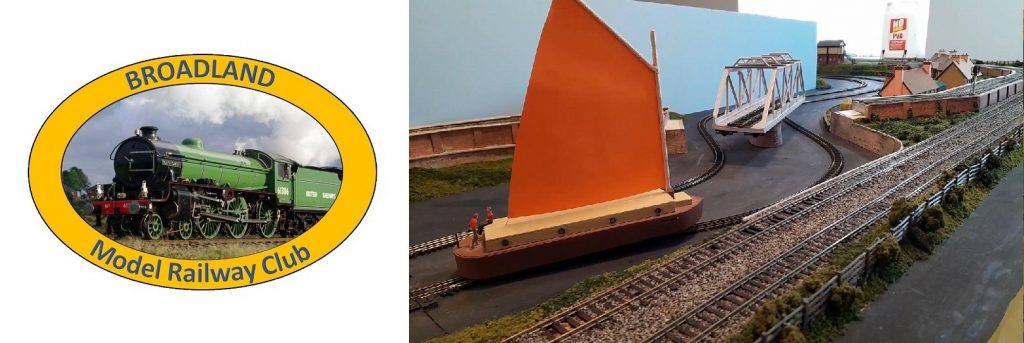This is a Club Layout built by a team of Club members
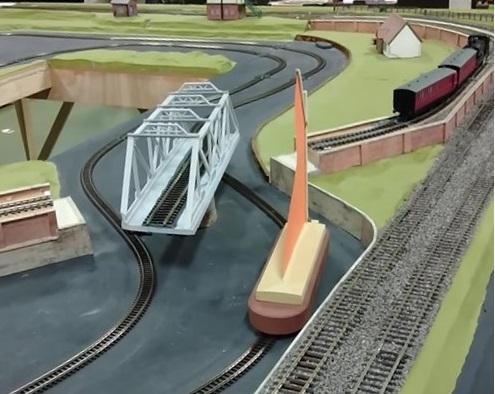
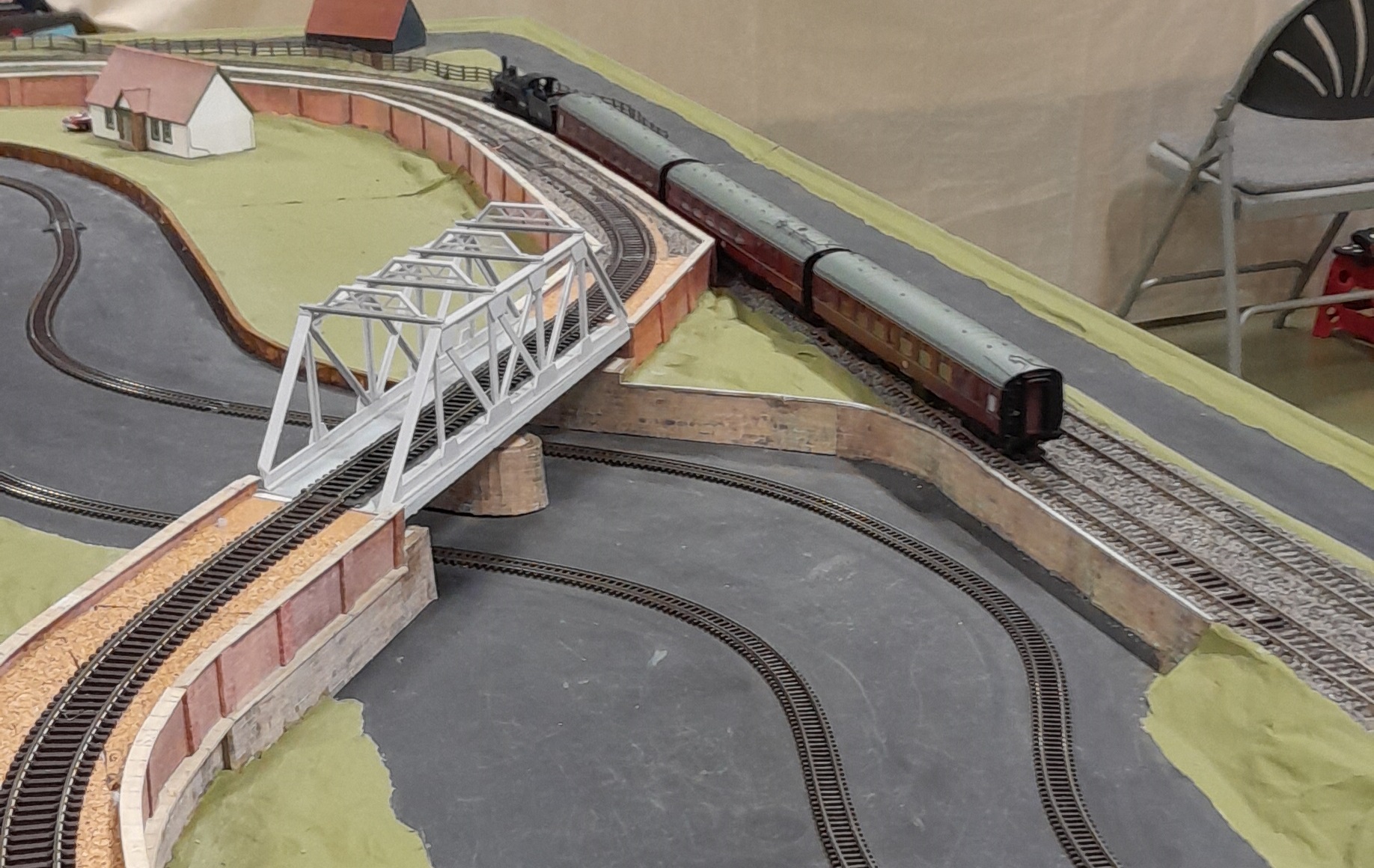
The club’s ‘Broadland’ layout is intended to give a flavour of the Norfolk region in which our club is situated, which is basically the area of river systems and lakes known as ‘The Norfolk Broads’, now known as ‘The Norfolk Broads National Park’.
With over 200 miles of navigable waterways and many more that are landlocked or too small/narrow for general navigation, and with many towns and villages situated in the area plus the significant City of Norwich, it would be impossible to include all the features of the area on one model railway layout. In view of this it was decided that we would create a mainly rural scene incorporating some of the ‘unique’ features to be found around us.
With size constraints of the space available in our clubroom to build the layout, and of the room that might be available to exhibit the layout in due course, it was decided that ‘00’ was the preferable gauge, built on a series of 48 inch by 30inch and 30inch by 30 inch boards laid out in a rectangular planform and operated by a DCC system.
Water is everywhere in the Norfolk Broads. Rivers, drainage dykes and the man-made lakes called ‘Broads’ which were the result of peat digging over very many years, plus a plethora of ponds, ditches and waterlogged marshes. So, naturally, we decided that we must incorporate a watercourse (river) running through the scene, connecting the other elements of the layout that will represent (but not necessarily copy) some of the railway features, rural industry and habitats both of the local people and wildlife. This will include moving boat traffic on the river, and we opted to achieve this feature by using an ‘N’ Gauge track system in the river area.
However well we manage to disguise the track in the river, it will still be visible and we decided that this would have to be accepted in the need for practicality. Doing it this way means that we can use a DCC operating system for the river traffic as well as for the railway system, meaning we can operate a number of boats on the same river tracks simultaneously.
With a number of railway lines crossing rivers in our part of Norfolk, bridges were a prime requirement. Some of the bridges, being on basically flat low-lying areas of the county, and with a requirement for tall masted sailing vessels plying the waterways that they crossed, the bridges had to be movable. We have therefore included a ‘swing’ bridge in our design, similar to a couple still in use on today’s railway. The bridge will operate automatically when approached by a Norfolk Wherry (a tall-masted sailing barge), with appropriate signalling and halting of railway traffic whilst the boat sails through the opened bridge. This will be achieved using a home-made system provided by our resident electronic genius.
Building of the baseboards commenced in early 2022, and more than half of the basic layout has been built as at March 2023. All the track that has been laid so far has been electrically ‘proven’ and we are beginning to add scenics to the boards now. The basics of the swing bridge system have been fitted and proven, with the bridge deck operating as intended. The bridge superstructure will be built shortly, and the landscaping of the approach areas is underway. Some of the layout buildings are also being built/remodelled ready for incorporation shortly. We hope to be able to exhibit much of the layout as a working ‘work in progress’ in the latter part of 2023.
Progress Report – April 2024
As we end another club year and move forward into another, I am pleased to be able to report considerable progress with Broadland – 00 Gauge layout.
The layout build has been ongoing for two years now and has been exhibited during 2023 as a layout in progress at Hoveton, Stalham and Bressingham. It has been received by the visiting public with a great deal of interest at each showing, even when the operating system (Gaugemaster DCC) failed completely during its first outing at Hoveton, when the only moving component that could be demonstrated was the swing bridge being activated by triggering the reed switches with a magnet on the end of a screwdriver, accompanied by a description of what should be happening related by Mick and Andy.
By the Stalham show in August the layout was operational, now controlled with the NCE DCC System, with a sailing wherry and pleasure cruisers operating on the ‘river system’, the swing bridge operating automatically when the wherry approached it, some trains were running and some basic scenics had been constructed.
At the Bressingham show in September the layout was in operation all day long with boats on the river system and trains running on the main tracks virtually non-stop, receiving a lot of interest and appreciation from the visiting public. This was a very tiring show for the operating Broadland team who had a long way to travel with early starts and long distances to travel, especially by John and Becky Larkins who had the longest distance to go.
Currently the layout is operational, all the signalling has been installed by Andy and is working. Andy is currently working on the level crossing gates which will be activated by approaching and departing trains. Most basic scenics are complete and the fiddleyards with cassettes are operational. The ‘drop-in’ board carrying track over the operator’s access area is just a functional board at the moment but will carry scenics in due course and provision will be made for the layout to be operated from the main viewing area as well as inside the layout.
Considering the size of the layout and that the construction team have mostly been able to work on it for only one day and one evening each week, I think that we have made very good progress so far.
You should also remember that during the last year the members of the Broadland team have also been those involved in the improved electrics in the club, provision by Andy of the new electrical certification certificate required by our landlord and the re-organisation of the clubhouse working areas amongst other things.
By this time next year, I expect the work on the layout scenic and the backboards to be substantially completed although, you know how it is, there will always be room for improvement and there may be changes to make along the way.
Club members have talked about ‘Running Nights’ and I think that Broadland would be the ideal layout for this in due course, involving a number of members actively involved.
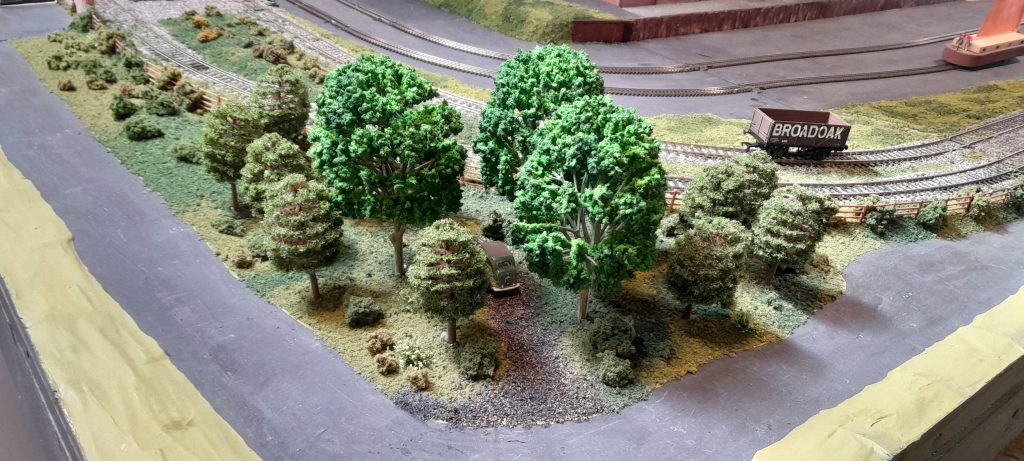
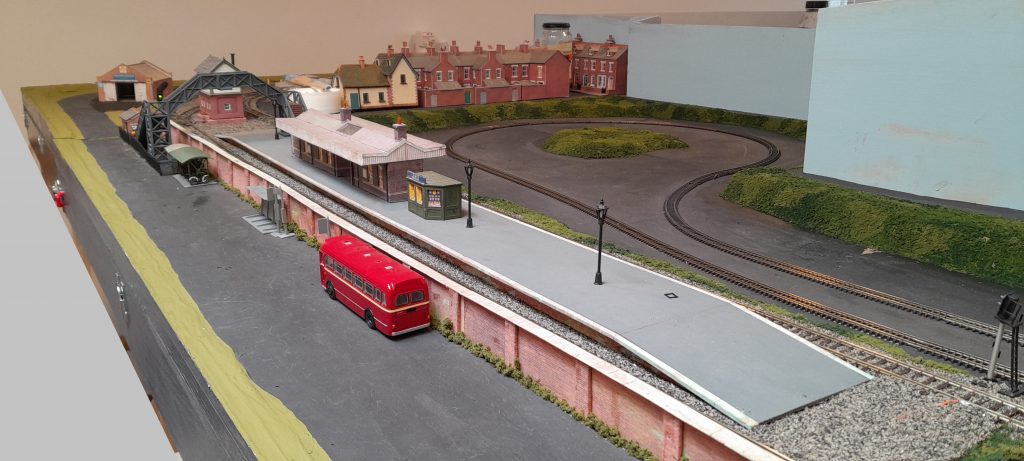
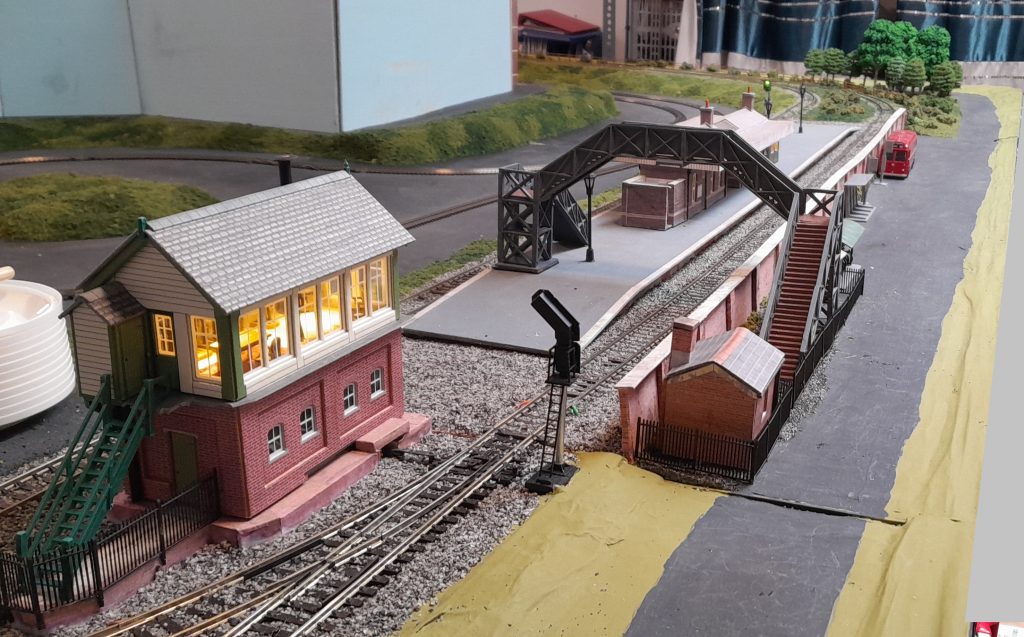
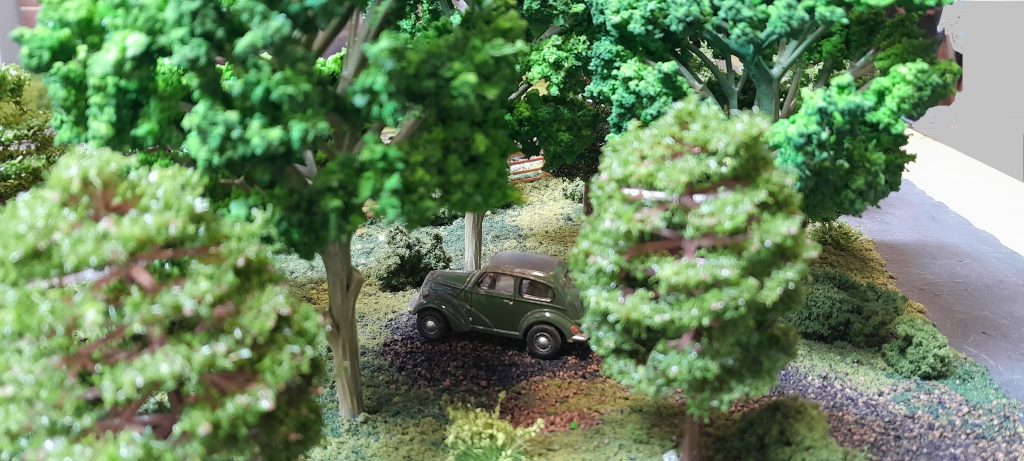
exhibition requirements
| Layout Size | 17′ x 9′ |
| Operating space | 23′ x 15′ |
| Number of operators | One to four |
| Number of cars to transport | Four |
| Maximum distance for travel | No overnight stays |
| Tables & chairs required | 1 table and two chairs |
